Current Drought Status
Despite recent rains, much of the Finger Lakes is still classified as being in a Level 1 (Moderate) Drought.
I have had several people ask about this and combined with an unchanging, more-of-the-same weather pattern, I figured this was a good time for a dedicated drought report.
A note to those who are testing the new FLX Weather app and reading this post there: the maps below will not show up by default. This is something we are working on. However, I will have a link for each map embedded within the text so you, too, can hopefully see the maps.
First, a quick background on the US Drought Monitor, which supplies the drought classifications. The U.S. Drought Monitor is produced through a partnership between the National Drought Mitigation Center at the University of Nebraska-Lincoln, the United States Department of Agriculture, and the National Oceanic and Atmospheric Administration.
Each week on Thursday, a new drought map is produced. This map includes a wide variety of data sources and reports. There is more to the map than just how much precipitation has fallen. The data for a given week is tabulated through Tuesday, so there is a couple day lag between the data cutoff and the published map.
A drought is declared when precipitation deficits have societal impacts, designated as Levels 1-4 on the drought map. Level 0 is a pre-drought classification as a first warning that conditions are abnormally dry.

Now, let’s take a look at our drought situation.
There has been a small amount of improvement in the drought classification over the last couple weeks. A few locations along the edges of the Level 2 and Level 1 zones have been dropped to the next lowest level. This change has been most pronounced across Tioga and Chemung Counties.
The rest of the region remains unchanged with a large swatch of Level 1 drought conditions through the Finger Lakes. This is much less serious than in 2016, when a large part of the region was in a Level 3 drought.
Precipitation over the last 30 days (Map Link) has been either just above normal (110%-125%) or below normal (50-90%). The increasing frequency of rain has simply been a trend back toward average. This is better for keeping the status quo than reversing the drought.
The bigger story is seen when we look at the last six months.

While the last map showed the percent of average, this map shows how many inches below average we are since the dry pattern began in the late spring. (Map Link)
The brighter orange areas are still over eight inches below average, with the lighter orange areas over six inches below average. Most of the region is still over two or four inches below average.
It will take much more than a couple rain events that bring one to two inches to erase these deficits. What is needed is several months of above-average precipitation so we can make steady progress.
Any Hints at Relief?
In the short term, we are in the midst of another dry, sunny period that will do no favors to our drought status. A solid week without rain will add another 0.5-1 inches to the deficit.
Rain is likely late next Wednesday as a cold front moves into the region. This does not look like a soaking rain event, but it may be enough to meet the weekly quota to keep the status quo.
There will be more chances for rain in the week that follows, but at this time, none of these look significant or even that certain.
Precipitation is extremely difficult to predict long term, even in general trends. That said, the Climate Prediction Center does have our region on the edge of the above-average precipitation designation for the last half of November.
The Seasonal Drought Outlook, which is valid through the end of January, has the Finger Lakes classified as “Drought Removal Likely”.
This winter will be a La Nina winter, which has a greater chance of seeing near to above-average precipitation than below-average precipitation. However, we have had winters with very little snowfall in a La Nina, most recently in 2011-2012, when Ithaca saw just 27 inches of snow all winter during a moderate La Nina.
Only time will tell, but multi-year droughts are rare in the Finger Lakes, so my guess would be the drought will end gradually over the winter and spring.
» Get Your Forecast for the Weekend
Important Notice
Please consider supporting Finger Lakes Weather’s 2020 Fall Fund Drive with a small monthly donation or small increase to your existing pledge.
This is the first organized Fund Drive in over 19 months and is necessary to keep Finger Lakes Weather operating and growing in the face of lost income due to COVID and planned advancements in user experience, including a soon to be released mobile app.
So far, the Fund Drive is only at 18% of its goal! Without additional support, it will be difficult to continue investing in improvements to Finger Lakes Weather, and even maintaining the status quo could be in jeopardy as reserve funds get used up.
Please visit the Fund Drive Page for more information, or make your contribution using the easy, secure form below.


David
My understanding is that winter is a “de facto drought” in that the moisture that falls is locked up (frozen) as snow, ice, etc. and thus not available for drought mitigation until it melts. Thoughts on this?
Meteorologist Drew Montreuil
I would agree with that, so long as the snow and ice stays frozen. Most of the time, our winter have enough thawing (even if it doesn’t completely melt the snowpack to zero) that it will help with groundwater levels, river levels, etc. But yes, if it stays cold for a long time, the water will just sit there, frozen…or worse, sublimate into the atmosphere.
For the purposes of recording keeping, the National Weather Service and its spotters melt snow and ice that fall and report the liquid equivalent…so that will be reported right when it falls, regardless of what happens to it after.